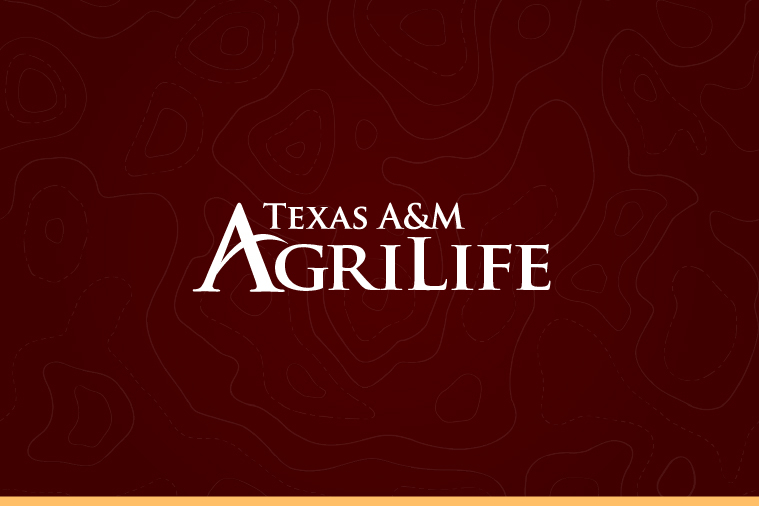Nesting habitat is vital to healthy quail populations
Writer: Steve Byrns, 325-653-4576, [email protected]
Contact: Becky Ruzicka, 661-618-3956, [email protected]
DALLAS – Maintaining a healthy wild quail population hinges on the success of their annual production, because they are short lived and have a high mortality rate, said a Texas quail expert.
“Without large numbers of new birds being added to the population each year it can quickly disappear,” said Becky Ruzicka, Texas A&M AgriLife Extension Service wildlife associate at Dallas. “The importance of prime nesting sites cannot be overstated as quality nesting cover is essential for quail to successfully hatch chicks, because it provides protection from predators and the elements.”
Ruzicka said in Texas, nesting cover is quite often the weakest habitat-related link on most properties.
“We discovered just how limiting proper nesting sites can be through data collected by cooperators in the 2014 Texas Quail Index,” she said. “The Texas Quail Index is a statewide AgriLife Extension program using private land managers, volunteers, AgriLife Extension agents and other agency personnel to collect data on both quail populations and current habitat conditions.”
She said the Texas Quail Index teams used formal habitat evaluations to assess quail habitat statewide and found the most commonly identified deficiency in quail habitat was nesting cover.
“Quality nesting habitat for quail are commonly bunchgrasses, such as little bluestem that’s at least basketball-sized in diameter and three feet tall,” she said. “However, quail may use other nesting cover types such as prickly pear and yucca if they are available. Even in the presence of excellent bunchgrass nesting cover, quail may select prickly pear nesting locations. Nesting in prickly pear obviously offers more mechanical protection in the form of cactus spines, and thus may give the birds a slightly higher nest success rate compared to bunchgrass nests at the same locations.”
She said quality prickly pear nesting cover is a mature, dense patch typically the diameter of a hula hoop and at least three pads tall or about 18 inches high. When assessing yucca for nesting suitability, she advised looking for large clumps with dead growth at the base that’s big enough to conceal a nesting hen.
“To visualize what it takes to hide a nesting hen, use the toe of your boot,” Ruzicka said. “ If you can hide the toe of your boot within the nesting cover in question, whether it is bunchgrass, prickly pear, or yucca, then most likely it will be suitable to conceal a quail’s nest. In contrast to other ground nesting birds such as turkey, quail do not typically use woody cover as a nesting substrate. While woody cover typically provides good escape cover and screening cover, it is unsuitable for nesting because it doesn’t provide the right plant structure to hide nests.”
Ruzicka said managers should strive toward having at least 250 to 300 suitable nesting sites per acre to provide adequate nesting cover on their property. Below this threshold, she said it becomes too easy for predators to find and eat the eggs. Predation can account for over 80 percent of nest failures.
“Improving nesting cover requires a combination of grazing deferment and good rainfall,” she said. “Native bunchgrasses are difficult to establish through seed, so maintaining and improving plants already present is critical.”
She said tall grasses such as little bluestem should have 12 to 14 inches of the previous year’s growth maintained; 6 to 8 inches for mid-grasses such as sideoats grama; and 3 to 4 inches for introduced grass species such as Bermuda grass.
“Quail nest in the previous year’s dead grass growth at the base of the plant. In the case of prickly pear, if a landowner is actively controlling prickly pear and wants quail, they should consider using individual plant treatment methods so they can preserve large clumps of prickly pear for nesting cover throughout the pasture.”
Aside from finding a way to make it rain, Ruzicka said proper habitat management is the next best way to positively impact quail populations.
“Good nesting cover conceals eggs from predators while providing thermal protection to keep eggs viable in hot weather. So it is vital that good nesting cover be maintained for quail populations to recover from their high annual mortality.”
To catch up on the latest in quail management, plan to attend the Statewide Quail Symposium Sept. 16-18 in Abilene. For further information on the symposium, go to [registration closed].
For more information contact Ruzicka at 661-618-3956, [email protected] or visit the Texas Quail Index site.






